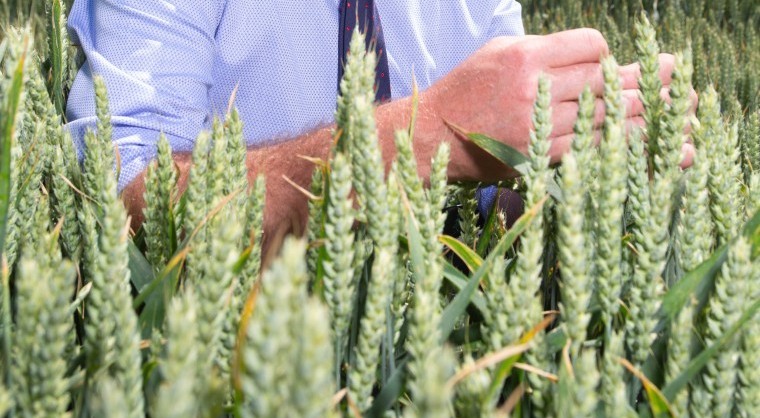Hybrid wheats offer yield and grain-quality improvements over conventional wheat in terms of consistency and and stability, and the opportunity to add in traits such as heat and drought tolerance or winter hardiness, says Stewart MacIntyre, northern seed manager.
“These will provide UK growers the opportunity to maximise wheat production on fields that are limited in their yield potential due to perhaps later drilling date, the rotational position of the crop or just simply from site limitations – and is timely when many growers are looking closer than ever at their costs of production.”
“There is no doubt that in the future hybrid wheats will play a part in helping growers maximise their output whilst aligning with integrated crop management.”
Hybrid wheat is a cross between two carefully selected pure wheat lines, so each hybrid variety has genes from both parents – which means it expresses hybrid vigour,
The benefits of hybrid vigour can be seen in better-developed root systems, more even plant establishment, increased tillering, early maturity and greater resistance to stress and disease, as well as other attributes which come from the combination of characteristics, such as better standing ability.
“However it’s important to understand how these potential benefits manifest over the growing season in comparison to conventional varieties – and the best ways of managing them – under UK growing conditions,” he adds.
“After all it is only by monitoring and measuring these differences that we can fully understand how to grow them to fulfill their best yield potential.”
In autumn 2018, Hutchinsons established a series of hybrid wheat trials across its extensive regional technology trials sites, where any differences between hybrid and conventional wheats could be monitored, measured and potential crop management techniques trialled.
“We hope to learn much more than just looking at varietal differences and disease scores. What we are aiming for is to really understand how to properly manage these genetics using improved agronomy and digital tools,” explains Mr MacIntyre.
“First results are already showing differences in tillering with the hybrids showing a greater biomass than conventionals. At our Carlisle site, the hybrids have an average tiller counts of 6, whereas in the conventional varieties it’s just 4. At our Helix site in Northamptonshire, these results are replicated with hybrids producing double the number of tillers over those of the conventionals.”
“We will now look at how we can manage this biomass over the season in order to maximise the yield potential – and this will be the critical learning. For example, the effects of variable seed rates and different bio-stimulants are being trialled.”
We will be in a position to share these and more results at our various regional technology trials open days in June.
Hybrid wheats at a glance
- New generation hybrid wheats expected in the early 2020’s
- Yield, quality, consistency and stability benefits over conventional wheats
- Fit into integrated crop management programmes
- Opportunity to add traits such as heat, drought and herbicide tolerance
- Best suited to tough growing conditions on more marginal sites
- Hybrid wheats are already grown in Europe, France and Germany predominantly.
- Trials will aim to learn more about managing hybrid wheats under UK growing conditions




